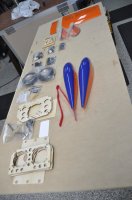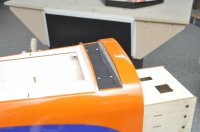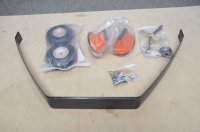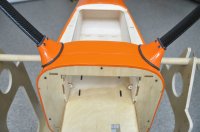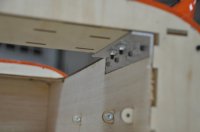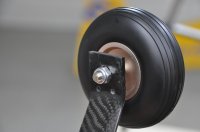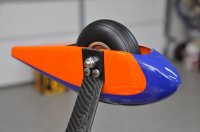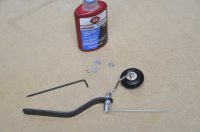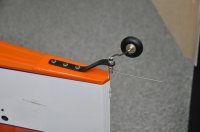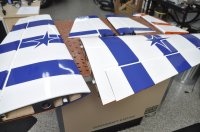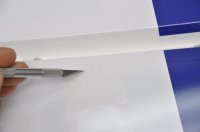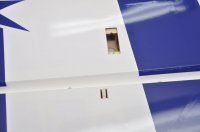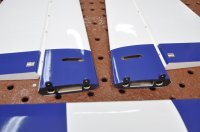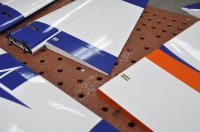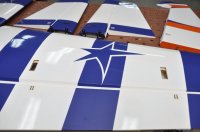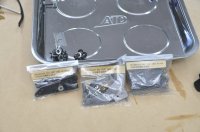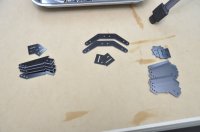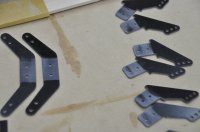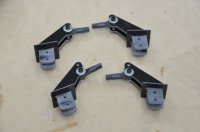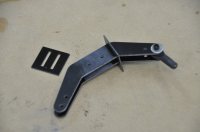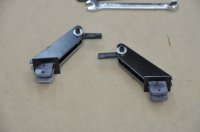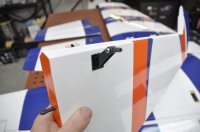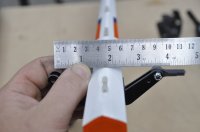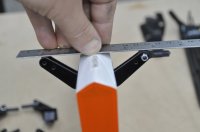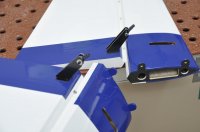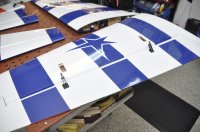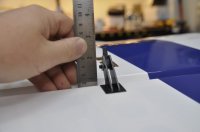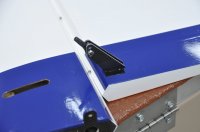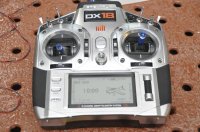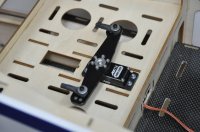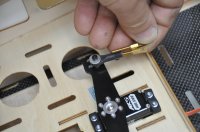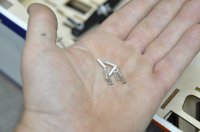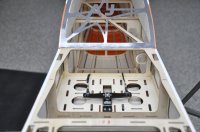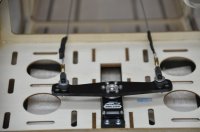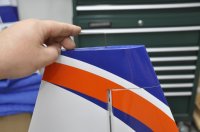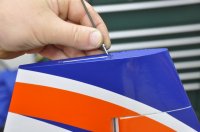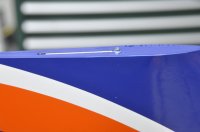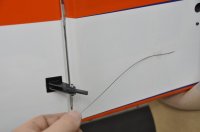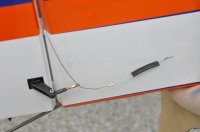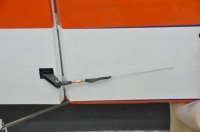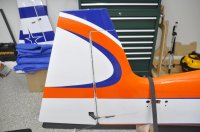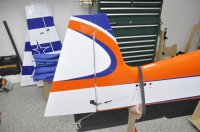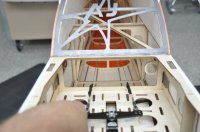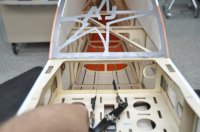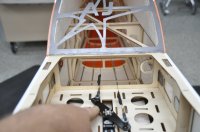I started a new program on my transmitter for this plane . I use a "base program" on my transmitter that has all my typical mixes, switches, rates, etc. etc. etc. all set up for me. I have several of these "base" programs set up on my transmitter for various plane types. I highly HIGHLY recommend this as you are never using one plane to start a new plane. With the complexity of the radios now there are just too many things to clear off but copying an old plane.
OK, now with that lesson over......
I set up my rudder servo for a pull pull arm. The ARS300 is not equipped for a tail rudder servo location due to CG constraints. The plane requires a 3.5" pull pull arm and if it is straight or offset depends on how well you installed the rudder horn. My rudder horn installed with the bolts just behind the hinge-line so I used an offset arm location.
Use double wire clamps on each end of both wires and it's a good idea to put a little heat shrink over them for further protection. Wires to the tail are crossed. The goal with ALL servos is the use ZERO SUB TRIM. I don't care what anyone says, sub-trim is not good especially if you are using more than a couple points. Always take the time to get zero sub trims and the best mechanical setup possible and you will be rewarded.
After installing the servo I installed the rudder itself using the wire and installed a servo screw to lock the wire. Next install the wire hardware out on the back side.
Wires need to be tight in the middle / center location of the servo. They should also remain snug at full deflection and throughout the range of travel. If they do not remain tight, reassess your setup and modify accordingly to make a good setup.
